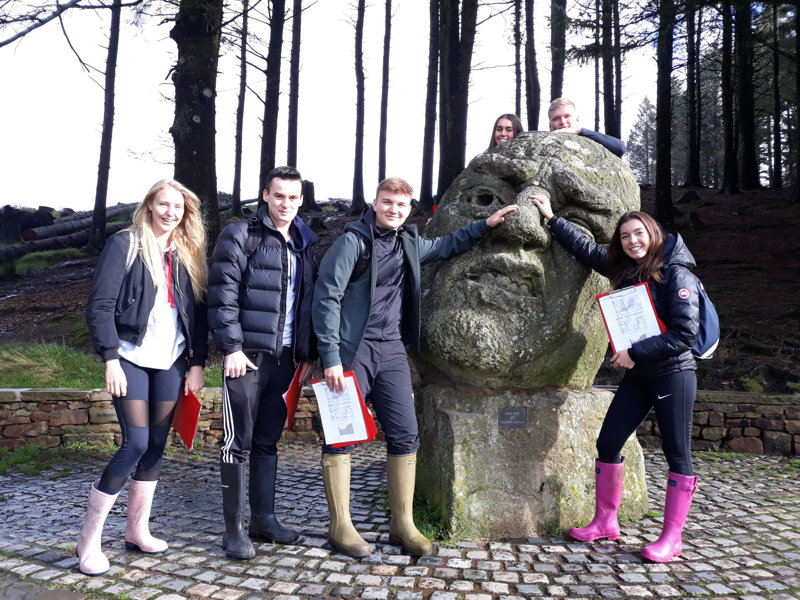3 October 2019

The end of September is normally an ideal time to be out ‘in the field’, with the remnants of the summer warmth still around and the full impact of winter weather yet to be felt. It was therefore an interesting week leading up to their day in the field, with the sheer amount of rain that had fallen. However, in many ways this turned out to be to their geographical advantage, as the purpose of their day was to study the Water and Carbon Cycles, and the amount of rainfall that they had witnessed over the previous days reinforced and evidenced many of the theories that they had set out to test.
Starting at Beacon Fell they conducted a line transect down a slope looking at changes to infiltration rates, soil type and vegetation cover. All students were excellent in their approach to the work, and were very quickly making astute observations about what they were seeing and how it linked back to the theory that they had learnt in the classroom. The weather had turned out to be rather sunny and they soon found some very picturesque places to complete their field sketches.
The afternoon saw them move their way down to the River Brock. They were unable to take measurements from the river due to the velocity of the water travelling downstream, but they could clearly see the idea of the drainage basin as a ‘flashy’ river with a very quick response time to any rainfall. Quadrat sampling of vegetation cover, discussion of coniferous versus deciduous vegetation type and the subsequent effect on both Carbon and Water Cycles ensued, as well as more photographs and field sketches of the study area.
All in all an excellent day was had by all. Lots of very good geography was observed and measured; many different fieldwork techniques were learnt and used, and all of this took place in a beautiful local environment. Highlight of the day for many were the scones and statues at Beacon Fell, but for others it was seeing the transformation of two millstone grit pebbles from the River Brock into the sand of Morecambe Bay.